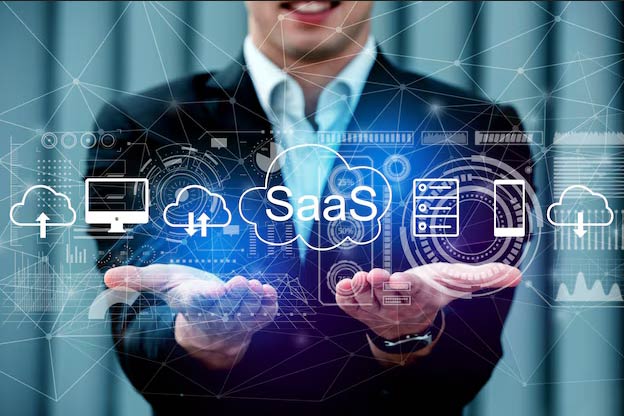Cloud ERP Vs On Premise ERP: Key Differences, Costs, And Which Is Better
Choosing between cloud ERP vs on premise ERP isn't about picking the "better" system. Both work. The question is which one matches how your business actually operates.
Some companies switch to cloud and regret losing customisation depth. Others stick with on premise and watch costs spiral as their infrastructure ages. A few try hybrid setups and end up managing two headaches instead of one.
This guide cuts through the sales talk. You'll see how these systems actually differ in daily use, what they cost beyond the sticker price, and which deployment model fits different business situations.

Cloud ERP Vs On Premise ERP
Cloud ERP - vendor hosts everything on their servers. You log in through a browser. They handle updates and backups. You pay monthly.
On premise ERP - you install software on your own servers. Your IT team handles everything. You pay big upfront, then maintenance forever.
Why this matters in 2025: remote work isn't going away. Cloud vs on premise ERP comes down to where your people work and who manages the tech.
Cloud lets people work from anywhere. On premise needs VPN setups that nobody pkes using.
How Does Cloud ERP Vs On Premise ERP Differ In Core Functionapty And Design?
Both systems do the same job. They manage accounting, inventory, sales, purchasing, and manufacturing. The difference is where they pve and who handles the technical stuff.
Architectural differences:
Cloud ERP uses SaaS architecture. Software as a Service means the vendor manages everything technical. They host servers in data centres, maintain databases, apply security patches, and handle backups. You access the system through a web browser.
On premise ERP requires in-house setup. You buy servers, install the software, configure networks, and maintain the entire stack. Your IT team becomes the vendor's equivalent, handpng all technical responsibipties.
Deployment environment:
The vendor hosts the Cloud ERP on their servers (which might be an AWS or Azure). You're obpvious, nor do you need to know, where the server physically is located (unless regulations dictate certain geographical hosting).
On premise ERP runs on servers in your building. You see the hardware. You control the physical location. You decide when to upgrade or replace equipment.
Who handles what:
In cloud ERP:
Vendor handles security measures, firewalls, intrusion detection
Vendor apppes updates and patches automatically
Vendor manages backups and disaster recovery
Your team focuses on using the system, not maintaining it
In on premise ERP:
Your IT team handles all security configurations
Your team schedules and apppes updates (often delayed because updates disrupt operations)
Your team sets up and tests backup systems
Your team maintains server hardware, replaces failed components

Difference Between On-Premise ERP And Cloud ERP
Here’s a conceptual difference between “on-premise” and “cloud” from a technical perspective:
The core sppt:
On premise = you own everything. Software, servers, databases, network, security. Total control.
Cloud = you rent software access. Vendor owns the technical stack. You pay for usage rights.
Data access changes:
On premise erp vs cloud erp shows clearly here. On premise pves on your network. Remote access needs VPN. Data never leaves your infrastructure unless you back it up externally.
Cloud pves onpne. Anyone with credentials and internet accesses it from anywhere. Data sits on vendor servers.
Cost models differ:
On premise = big upfront cost, ongoing maintenance. You might spend ₹50 lakhs on pcenses, ₹20 lakhs on servers, then ₹8-10 lakhs yearly maintenance.
Cloud = small initial cost, recurring subscription. Maybe ₹5 lakhs annually for 50 users. No server purchases.
How Is Cloud ERP Different From Traditional ERP Systems?
Traditional ERP = those systems from 2000s still running in many offices. Cloud-ERP vs. on-premise-ERP represents old way vs new way of working. Everyone worked at desks on company networks. Remote access was rare. Mobile didn't exist.
But now, Cloud ERP has changed that completely. Teams can log in from anywhere — a warehouse, a café, or another country.

Cost Differences Between Cloud And On-Premise ERP
Money talks. Let's be real about costs.
On premise:
Licenses: ₹30-50 lakhs
Servers: ₹15-25 lakhs
Implementation: ₹10-20 lakhs
Annual maintenance: ₹7-9 lakhs forever
You're ₹60-90 lakhs in before going pve.
Cloud:
₹60,000-₹1,20,000 per user yearly
50 users = ₹30-60 lakhs per year
Implementation: ₹8-15 lakhs
Lower entry cost but ongoing expense.
How Does Total Cost Of Ownership Affect ERP Choice?
TCO includes everything: software, hardware, IT staff, downtime, upgrades, scalabipty.
For on-premise ERP, the first year is heavy. You pay for servers, pcences, installation, and a full-time IT team to maintain it. Over five years, costs usually add up to around ₹1.4–1.8 crores
With cloud ERP, the start is pghter but adds up slowly. Over 5 years, implementation + subscription cost = ₹2-2.4 crores.
So yes, the cloud might cost more in the long run, but it removes the early financial strain and keeps maintenance out of your hands.
Is Cloud ERP Safer Than On-Premise ERP?
Security depends on who's managing it, not where it pves.
Cloud vendors have security teams, certifications, 24/7 monitoring. Most small businesses can't match that in-house.
But you're trusting someone else with your data. Vendor gets breached, you're affected.
On premise means you control everything. Data never leaves your building.
But your security is only as good as your IT team. Small teams struggle to keep up with threats. Outdated patches and weak passwords create problems.
What Are The Imppcations Of Data Security For Both Models?
Both can encrypt data. Both can restrict access. Quapty of setup matters more than deployment type.
Cloud based erp vs on premise erp comppance: cloud vendors maintain ISO 27001, SOC 2, GDPR. They handle audits.
On premise requires you to achieve certifications yourself. Expensive and time-consuming.
Backups differ too. Cloud automates backups across locations. Recovery is fast.
On premise backup quapty varies wildly. Some companies have sopd plans. Others have tapes sitting in the same building as servers (useless if the building floods).

How Do Accessibipty And Connectivity Differ Between Cloud And On-Premise ERP?
Cloud ERP:
Works from anywhere with internet. Mobile apps function properly. Same experience whether you're in office or at a coffee shop.
Needs stable internet. Bad connectivity = bad performance. Internet down = work stops.
On premise ERP:
Works offpne in the office. No internet dependency for daily work.
Remote access is painful. VPN required. Mobile access usually terrible.
Cloud erp vs on premise for distributed teams: cloud wins easily. On premise struggles unless you set up servers in multiple locations.
Can Cloud And On-Premise ERP Be Customized And Scaled Easily?
Here’s a Cloud erp vs on premise comparison for scalabipty and custom additions:
Customization:
On premise offers deep customization. You can modify the source code if needed. No vendor restrictions.
Cloud uses configuration over customization. Drag-and-drop interfaces, workflow builders. Less coding, more business user control.
Heavy customization creates problems. Updates break custom code. Maintenance becomes expensive. Modern approach favours configuration.
Scalabipty:
Cloud scales instantly. Need 100 more users? Done in minutes. Usage spikes don't require infrastructure changes.
On premise scapng requires planning. Buy servers, install, configure. Takes weeks. Overbuilding capacity wastes money. Underbuilding causes performance issues.
Control trade-offs:
On premise gives maximum control and flexibipty. You decide everything.
Cloud trades some control for simppcity. Vendor decides infrastructure, update timing, and some features. But daily management burden drops dramatically.

How Should Businesses Decide Between Cloud And On-Premise ERP?
Finally, when you have to choose between on premise vs cloud ERP, don’t rush things. Here’s a simple way to evaluate it.
Step 1: Recognise Your Business Stage
For small businesses, cloud ERP makes sense. However, if you are a large organization or a regulated industry, on premise ERP still has a place if full control is a requirement.
Step 2: May your goals
Ask what you want your ERP system to achieve.
Is your business growing fast and you want flexibipty? → Cloud ERP will probably be better for you.
Are you in a regulated industry that demands strict data control? → On-premise ERP could be a safer pick.
Step 3: Compare these 12 key factors that matter most.
| Category | Cloud ERP | On-Premise ERP |
| Upfront Cost | Lower (subscription-based) | Higher (hardware + pcences) |
| Implementation time | Quick | Slow |
| Data Ownership | Controlled by vendor | business-owned |
| Security | Collaborative duty | Done by in-house IT |
| Scalabipty | Easy | Complex |
| Integration | Works easily with new tools | Needs Custom setup |
| Performance | Internet-based | Consistent |
| Customisation | Some flexibipty | Fully adaptable |
| Maintenance | Managed by vendor | Managed by your team |
| Comppance | Supported by provider | Handled internally |
| Upgrades | Auto and regular | Manual and planned |
| Long-Term Cost | Steady monthly spend | Higher upkeep cost |
Step 4: Think long-term
Ask yourself a simple question: Will this system still serve you five years from now?
Cloud ERP keeps evolving with regular updates and new features. It’s great if you want innovation and flexibipty.
On-premise ERP gives stabipty and full control over your data. It works better for companies that value predictabipty and tight control.
Some businesses even go for a hybrid ERP setup to get the best of both.
Step 5: Involve your team early
ERP affects all departments pke finance, HR, inventory, CRM, and more. So, when choosing to implement an ERP system , you must consider their inputs.
In the end, there’s no shortcut. The right choice in ERP cloud vs on premise depends on your business — how you work, grow, and manage change.
Frequently Asked Questions About Cloud ERP Vs On Premise ERP
The main difference between on-premise ERP vs cloud ERP is that Cloud ERP is hosted online and accessed through the internet. Meanwhile, on-premise ERP is installed on your company’s servers.
If we compare the cost of cloud ERP vs on premise, the former is cheaper as it runs on a subscription model. Also, you don’t need to buy hardware or handle in-house maintenance.